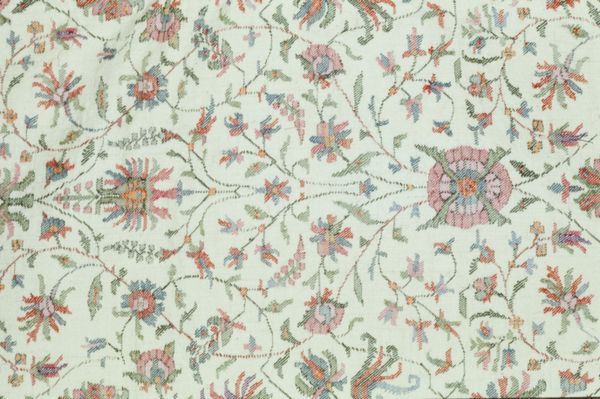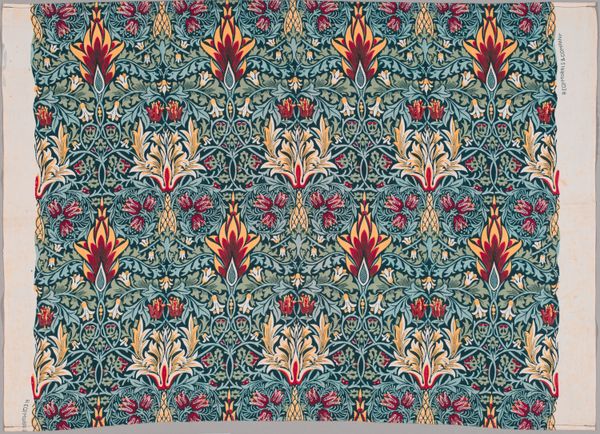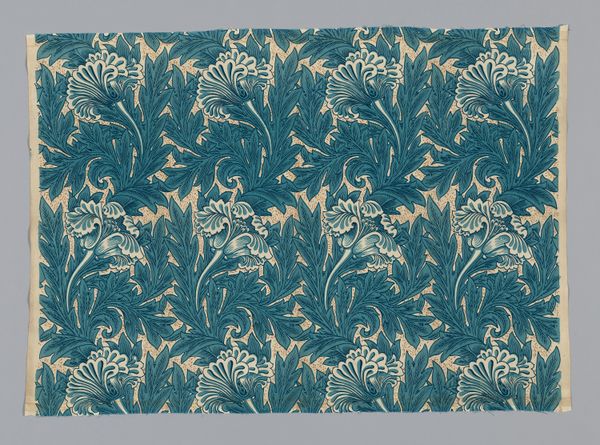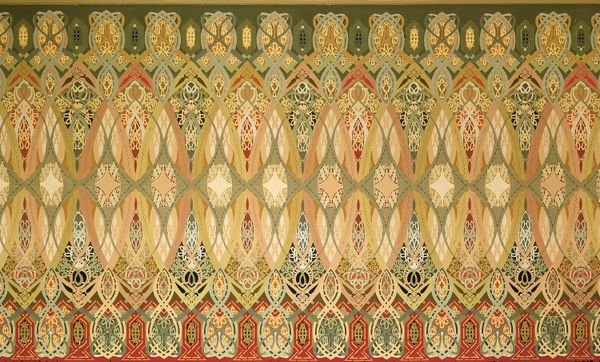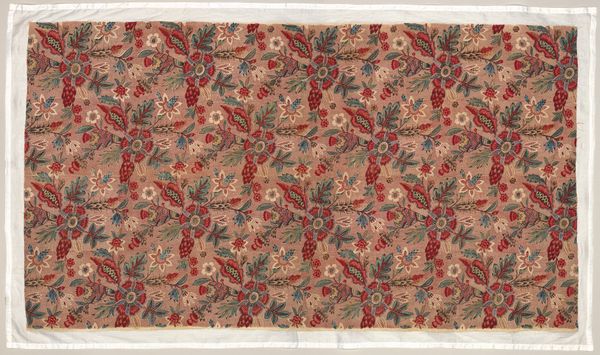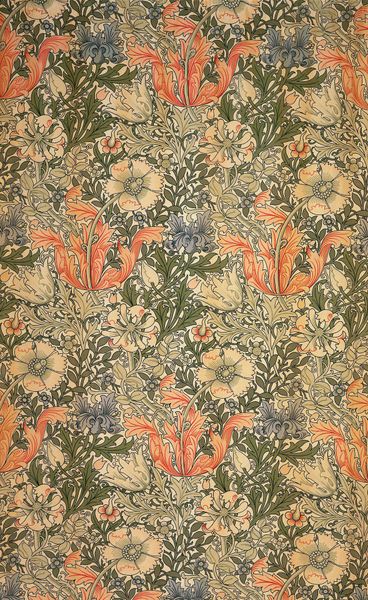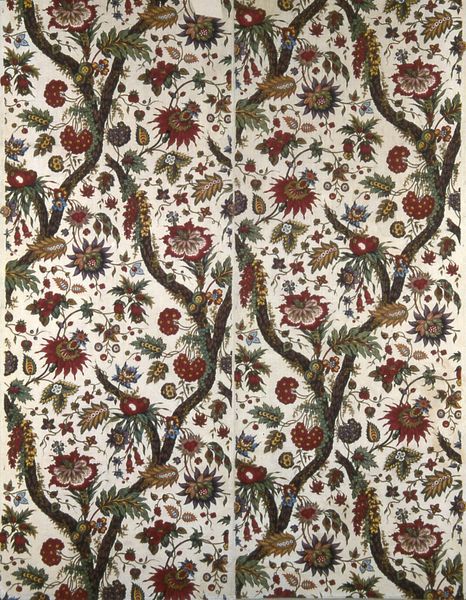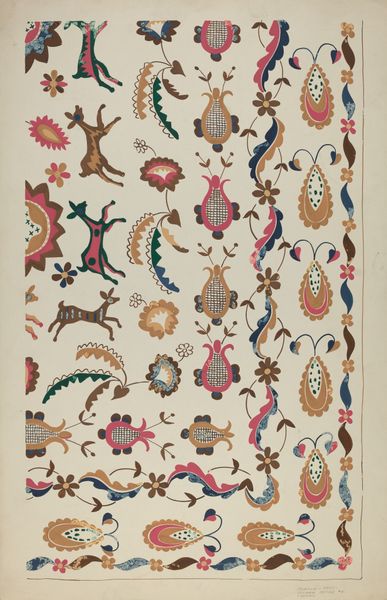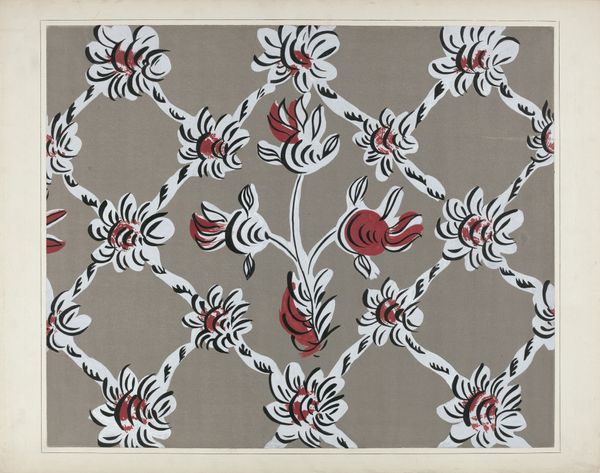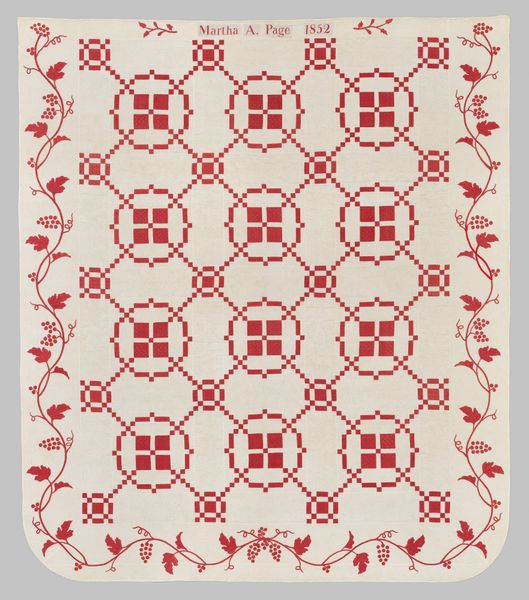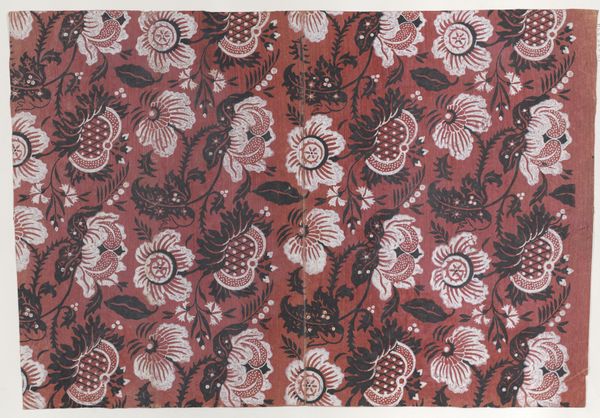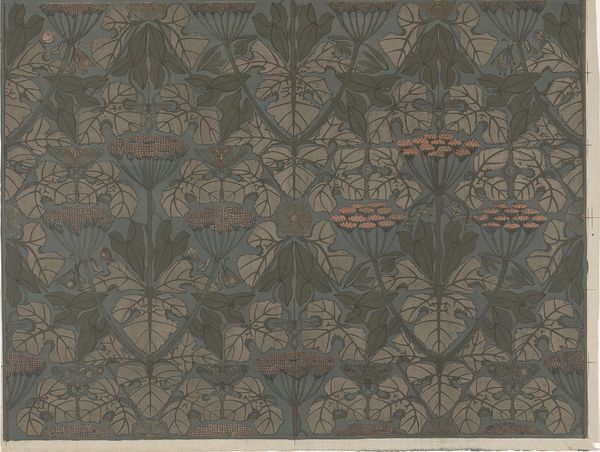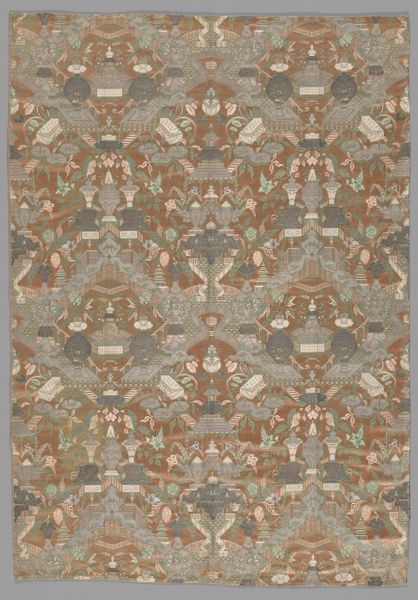
textile
#
textile
#
decorative-art
Dimensions: 118 1/2 × 63 1/4 in. (300.99 × 160.66 cm)
Copyright: Public Domain
Editor: Here we have an 18th-century textile panel, artist unknown, a vibrant weave of pattern and color. There’s something both opulent and strangely constrained about it, given its repeating pattern. How do you interpret this work, especially considering the time it was created? Curator: What I see is a window into a complex network of global exchange and colonial power. Textile production of this era wasn’t simply decorative; it was deeply embedded in economic and social structures marked by exploitation and trade imbalances. Consider where the raw materials originated and the hands that wove this piece. Where do you think this panel would have been displayed, and by whom? Editor: Perhaps in a wealthy home, used for curtains or upholstery. The style feels very “aristocratic,” or even a church. The visual style might hint at someone religious with status? Curator: Exactly. The visual luxury points towards a specific social class, a class that benefitted directly from these unequal global exchanges. The romanticized floral motifs often obscure the grim realities of labor and resource extraction that made such beauty possible. When we admire its elegance, it's critical to consider what this panel silently reveals about power, privilege, and exploitation within historical contexts. Do you agree it's essential to acknowledge these aspects when studying decorative arts? Editor: Absolutely, recognizing the history embedded in objects like this is essential to really see it for what it is and where it comes from. The piece takes on new meaning when examined this way, offering a much broader story about history and people. Curator: It is a striking paradox: beauty intertwined with often unseen stories of injustice and colonial exploits. I leave with much food for thought about our relationship with objects in museums.
Comments
minneapolisinstituteofart almost 2 years ago
⋮
This textile was made in Southern India by traditional artisans skilled in the production colorful cotton cloth, or chintz. Its intricate design resulted from a laborious process of hand-drawing, block printing, and vat dyeing that took weeks to complete. Soon after their involvement in Indian Ocean networks, European traders observed a demand for chintz among elite buyers back home, and responded by suggesting designs to Indian manufacturers so that their goods kept step with European textile trends. The pattern on this chintz mimics silk designs popular throughout Western Europe in the early eighteenth century, but the rare presence of an English East India Company trade stamp on the back tells us the panel was destined specifically for English markets.
Join the conversation
Join millions of artists and users on Artera today and experience the ultimate creative platform.
